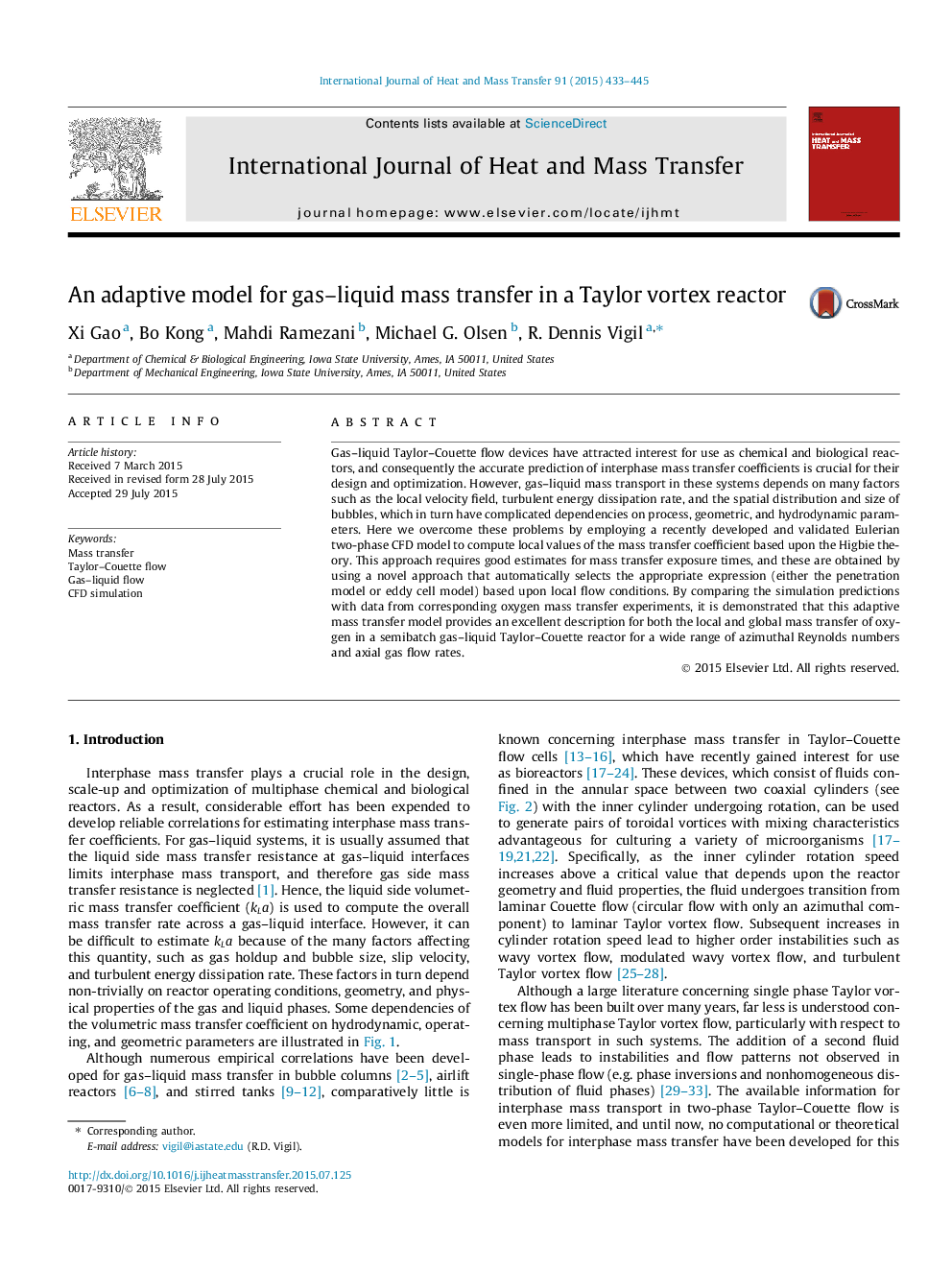| Article ID | Journal | Published Year | Pages | File Type |
|---|---|---|---|---|
| 7056208 | International Journal of Heat and Mass Transfer | 2015 | 13 Pages |
Abstract
Gas-liquid Taylor-Couette flow devices have attracted interest for use as chemical and biological reactors, and consequently the accurate prediction of interphase mass transfer coefficients is crucial for their design and optimization. However, gas-liquid mass transport in these systems depends on many factors such as the local velocity field, turbulent energy dissipation rate, and the spatial distribution and size of bubbles, which in turn have complicated dependencies on process, geometric, and hydrodynamic parameters. Here we overcome these problems by employing a recently developed and validated Eulerian two-phase CFD model to compute local values of the mass transfer coefficient based upon the Higbie theory. This approach requires good estimates for mass transfer exposure times, and these are obtained by using a novel approach that automatically selects the appropriate expression (either the penetration model or eddy cell model) based upon local flow conditions. By comparing the simulation predictions with data from corresponding oxygen mass transfer experiments, it is demonstrated that this adaptive mass transfer model provides an excellent description for both the local and global mass transfer of oxygen in a semibatch gas-liquid Taylor-Couette reactor for a wide range of azimuthal Reynolds numbers and axial gas flow rates.
Related Topics
Physical Sciences and Engineering
Chemical Engineering
Fluid Flow and Transfer Processes
Authors
Xi Gao, Bo Kong, Mahdi Ramezani, Michael G. Olsen, R. Dennis Vigil,
